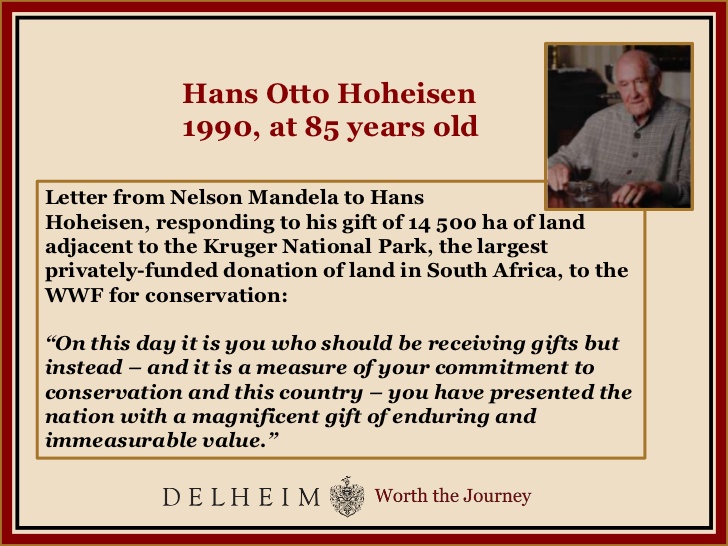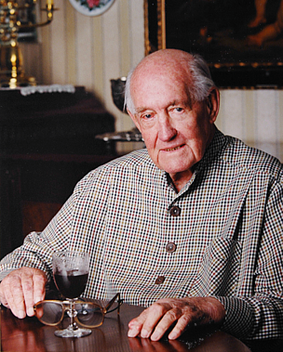Hans Hoheisen
Ardent conservationist and benefactor for wildlife
Hans Hoheisen
“In his quiet, humble way, without publicity, he made an impact in the conservation arena which will leave our children in awe for decades to come.” - close friend and fellow conservationist Dr Anton Rupert.
By a quirk of history, Hans Otto Hoheisen (1 March 1905 – 8 July 2003) spent an impressionable part of his childhood in the bushveld near the southern border of the Kruger National Park. It was an experience that sowed the seeds for his unique legacy: a profoundly beneficial and lasting impact on nature conservation in the sub-continent through generous donations and wise actions during his lifetime and, after his death, through his very considerable bequest to the Hans Hoheisen Charitable Trust that bears his name.
Hoheisen was the son of Alfred August Hoheisen, a German building contractor who had immigrated to South Africa in 1903. Hans was born in Braamfontein two years after his father’s arrival. Because he was a German citizen, Alfred Hoheisen was interned in the Baviaanspoort camp in Pretoria during World War I. It was a grim experience for the master builder, but during that internment his wife and children lived on a farm in Hectorspruit, near the southern border of the Kruger National Park in Mpumalanga’s Lowveld, and it was here that the young Hans was first exposed to the bushveld, the conservation of which was later to become his abiding passion. When his father died in 1965, Hans Hoheisen inherited the Timbavati farms. Doubtless spurred by his childhood memories, he became an ardent conservationist and developed these properties into a secure refuge for wildlife. He built the Hans Hoheisen Wildlife Research Centre near the Park’s Orpen Gate, becoming the first private land owner to allow The University of Pretoria veterinary students to do research field work on his property. In 1990 Hoheisen donated 13 833ha of his Timbavati land to WWF South Africa. In 1992 he acquired the farm Ngala in the same area which he also donated to WWF-SA, and which with the other properties became the Ngala Game Reserve. Hoheisen also donated land for the establishment of the Southern African Wildlife College, a project conceptualised in 1993 and established in 1997 by WWF-SA through a grant by the German Ministry of Economic Cooperation via the German Development Bank. This R20m project continues to train students to manage protected areas throughout the continent. (Courtesy: World Wildlife Foundation)His valuable work continues through the substantial bequest he made to the Hans Hoheisen Charitable Trust, managed by Nedbank Private Wealth.
In his will, Hans stipulated that a significant portion of his very substantial estate should be transferred into the Hans Hoheisen Charitable Trust and managed by Nedbank Private Wealth solely for the preservation and conservation of fauna and flora in South Africa. Only public benefit organisations were to be awarded funds from the Trust which has grown by well over R200 million to R+500 million, making it one of the largest private trusts supporting conservation in South Africa.
Visit the Hans Hoheisen Charitable Trust website which provides grants to conservation bodies engaged in physical biodiversity conservation and working in the cross-cutting environmental governance and advocacy, climate change, research and education arenas.
ARTICLES OF INTEREST:
Hans Hoheisen Wildlife Research Station (PDF).
HANS OTTO HOHEISEN TRUST - Conservationist and Philanthropist.



